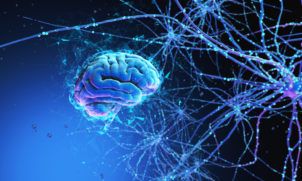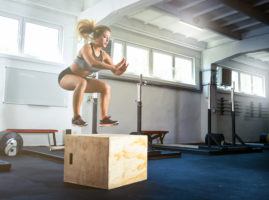Pilates and Stress: Embrace The Power of Slow
Stress. It’s everywhere. If you talk to just about anyone you know, you’ll likely hear a wide variety of stressful tales. We are all just beginning to understand how deeply stress can influence the risk of developing a whole host of illnesses. Stress can have an effect on our ability to recruit certain kinds of muscles in the body too. Over time, this altered muscle activation can have a profound effect on our structural health. The Pilates method can offer powerful support in combating these effects of stress on our bodies, minds and spirits. Pilates and stress: embrace the power of slow!
What Stress Does to the Body
Broken down to its simplest form, stress is basically just any force or tension exerted or applied to an object. In small doses, stress is actually good for the body. It takes you outside your comfort zone and it taxes you in ways that make you stronger. The whole fitness industry is based on the idea of increasing stress on the body in measured increments to gradually increase strength and other physical capabilities. But in large doses, or in a long, un-interrupted run; stress can gradually but dramatically erode your health and well-being.
When we are chronically stressed, our bodies can too easily fall into a state of chronic “fight or flight.” We might feel that we can get a heck of a lot done in that state, but the productivity can’t last forever, and it comes at a cost. We can’t sleep very well. Our eating habits and digestion are altered. Breathing patterns are corrupted and our blood pressure changes. Our hormones get out of whack which affect our metabolism, and all kinds of other systems. We open the door to biological and physiological mechanisms that may facilitate the onset of disease. Our focus and thought patterns narrow. An overactive sympathetic nervous system may also affect on how we are able to recruit our muscles for movement!
An Overactive Sympathetic Nervous System

A 2008 study published in the Journal of Physiology (Roatta, Arendt-Nielsen and Farina) studied the effects of sympathetic-induced changes in activation of slow twitch muscles in the human body. Slow twitch muscles are typically those that provide stability to the body, and are important for endurance activities. This study discovered that sympathetic activity can inhibit the activation of slow-twitch muscles in the body. In the presence of a real physical threat this might be useful; diverting blood flow and energy from the “inner body” to the powerful muscles that we need to fight or run away. But in the context of chronic stress, the study’s authors come to the following conclusion:
“The change in contractility would interfere with motor control and require the adoption of sub-optimal motor strategies. Both the increased metabolic activity and the altered motor control may be co-factors in the development of chronic muscle pain syndromes.”
Chronic stress can create unexpected challenges for the activation and integration of core musculature, for balance and coordination and for the sustainability of efficient and effective motor control strategies.
“Fight or Flight” at the Gym
When we take all that altered function into a workout, more insidious and unexpected things can happen. Type 1 muscles often function in an endurance and/or postural capacity. They play a role in looking after the structure and organizing the relationships between bones underneath larger movement. Our bodies prioritize safety over just about everything. If the body is not feeling secure because the deep stabilizer muscles can’t function properly, the brain will find another way create stability.  More often than not, the brain will then choose to use some of those Type 2 muscles for stability. Smart brain… getting ‘er done!
More often than not, the brain will then choose to use some of those Type 2 muscles for stability. Smart brain… getting ‘er done!
The only problem is that those Type 2 muscles will require more energy to do the job less well. The structure will require more effort from those muscles to sustain it. The body start to feel chronically tight, and range of motion suffers. Then, we take that to the gym and load our bodies with as much effort as possible in order to gain “strength.” We go hard, inadvertently feeding into more “fight or flight” activation. We work, we sweat, we feel the fabulous rush of endorphins, our bodies change and the muscles look goooooood. Yahoo! Right?
Maybe in the short term… But over time, those non-optimal control strategies may come back to bite us in our fabulous asses.
How Pilates Can Help
When Joseph Pilates first created his famous method, he called it “Contrology.” A good Pilates class will often proceed at a relatively measured pace, asking you to think about and feel how you’re moving; integrating your breath along the way. Pilates requires presence, focus and attention. If you take the time to embrace the true nature of this work, beyond the “core blast” it’s famous for, you’ll find some really valuable ways to combat stress. And you’ll gain long term support your structure too.
- Pilates requires concentration. Learning to release tension, accessing new muscle patterns, taking time to really feel your body and how it responds to the movement and to the load of the springs, figuring out where to initiate movement from: at first, Pilates can feel like mental gymnastics! The presence and inward focus you develop in the process can help ground you in your own body.
- Pilates requires control. Bringing awareness to movement patterns, and learning more optimal movement strategies is exciting – especially when you feel movement get EASIER! Your nervous system doesn’t have to stay stuck in a never-ending sympathetic loop. You begin to understand that you don’t have to bear down to create power. Your strength starts to come from a place of calm integration. You can work hard, but struggle doesn’t have to be the status quo to get great results.
- Learning to control the spine, pelvis and trunk is a reliable path toward real, functional stability. Developing an intelligent core, with the capacity to handle whatever you throw at it, is a powerful thing. When we can down-regulate the sympathetic nervous system, access to the deep system core is enhanced. Pilates achieves this with intentional breath and release work before you get down to “the business” of your workout. Suddenly those “core” muscles that people struggle so hard to find can suddenly start engaging well. Without the fight to find them. When the core functions without you having to consciously and consistently brace it; then the stabilizing core is a reflexive part of your moving life. Score another victory for the nervous system.
- Taking care to move well is key. Movements are precise, because how you move matters. The care you take to repeatedly practice a more optimal movement pattern, the more likely that pattern is going to appear in your movement outside of the studio. Good movement help create unconscious stability and control, which means the brain can kick back and quit worrying about holding your skeleton together. Take that out into the world and take it for a spin! Suddenly movement is FUN again.
- Uncoordinated movement is often a sign that the body is not well integrated, which means that there might be some instability lurking underneath. As you move in ever more sophisticated ways to challenge your mobility, strength and stability, your body learns to move with fluidity and ease. Ease is the opposite of stress.
- Pilates uses intentional breathing patterns to support the structure in motion. Depending on the style of Pilates you practice, these breath patterns may be very energetic, or quiet and relaxed. Connecting breath to the movement improves not only postural control, oxygen exchange and all those good things; it means that every time you take a breath, you’re working your deep core. When you’re doing this consistently, your need for “belly-flattening” exercises will likely drop off significantly too.
Embrace the Slow!
Not all Pilates is slow. But regardless of the pace, there can be an embodied connection to the movement that introduces you to a whole new relationship to your body. An internal focus on breath, on movement and on support creates space in your body and mind for a new way to engage with your world. You develop an internal listening that helps the nervous system balance itself out. We add speed, load and expanded ranges of motion only when the body can reliably support all the good stuff. Instead of constantly throwing more muscle at things, there is time to observe, feel, connect and reflect. You can still work hard, but the goal is to work SMART in the process.
I love Pilates. In my life, the sweet spot is the combination of Pilates with all kinds of other movement. But if Type 2 fun is the only thing that turns you on; check out Stress & Your Workout: What You NEED To Know for more strategies on managing nervous system balance in other ways. Check out our Getting Started Guide to learn more about Moving Spirit’s Pilates & Integrated Movement Programs, or book an Introductory Private Training Package today.
If you’ve intentionally used Pilates or other movement forms for stress relief, we’d love to hear your story! Please share it with us in the comments below.
Until next time, move well!
About Susannah Steers
Susannah is a Pilates and Integrated Movement Specialist, and owner of Moving Spirit. Through movement teaching, speaking, and facilitating workshops, she supports people in creating movement practices that promote fitness from the inside out. She loves building community, and multi-disciplinary connections. Susannah co-hosts The Small Conversations for a Better World Podcast, an interview-based podcast dedicated to promoting the din of conversations about health that can spark positive change in individuals, families, communities and across the globe.
